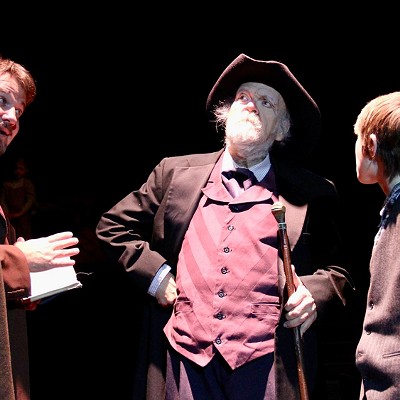
“Everything you would expect to see will be there,” said Shoshana Wasserman, director of communications and cultural tourism for the Native American Cultural and Educational Authority (NACEA). “The last three or four years has been about the funding and not the cultural experience people will have. This (museum) will change the minds of people from outside Oklahoma.”
Wasserman and her boss, NACEA Chief Executive Officer Blake Wade, know the American Indian Cultural Center and Museum, located along Interstate 40 and Eastern Avenue, will draw international tourists and guests from across the United States, which will be an economic boom for the OKC metro area.
International travelers spend an average of $4,000 per person at their destination during a 14-day stay in the United States, according to figures from the U.S. Department of Commerce International Trade Association. During their stay, visitors spend about 15 percent of their time at museums and educational attractions.
The commerce department also reported that 78 percent of all American leisure travelers (118 million adults) participate in cultural activities while traveling and contribute more than $192 billion annually to the U.S. economy.
Already, project officials estimate the cultural center will create a $3.8 billion economic impact over the next 20 years as developers are ready to build hotels, restaurants and retail on nearby land, Wade said. Once open, the cultural center could draw an estimated 250,000 visitors annually and produce about $3.5 million in revenue, according to agency projections.
However, no one is counting that money yet. State lawmakers still need to approve a request for $40 million from the Oklahoma Unclaimed Property Fund, combined with another $40 million in private pledges from the state’s 39 tribes, individuals and companies.
Construction of the cultural center and museum stopped in 2012 when state funding dried up, Wade said.
Since then, political controversy has surrounded the project with some lawmakers opposed to any new funding.
Republican
legislators railed against using state revenue bonds as a funding
source but apparently like the idea of using the Unclaimed Property
Fund.
Senate Bill
1651, co-authored by Sen. Kyle Loveless (R-Oklahoma City), passed the
Senate Appropriations Committee by a 21-3 vote on Feb. 19. The full
Senate was scheduled to consider the bill this week. If approved, it
would then need to pass a House vote.
Moving forward
In
a larger sense, visitors to the center and museum will discover how the
Oklahoma Native American experience is representative of America’s
story, Wasserman said.
“They
will see there are 39 distinct Indian nations with 12 different
language families converging in Oklahoma, each with its own story to
tell across the state,” she said. “This will truly be an authentic
experience, not one that is staged. There will be information about how
each tribe came to Oklahoma, where they came from and their journey
here. People will see there are multiple trails of tears, not just one.”
Wasserman,
a member of Muscogee Creek tribe, said the center will serve as host to
cultural materials from the Smithsonian National Museum of the American
Indian Collection, permanent and changing art galleries, an outdoor
cultural park, a family discovery center and a permanent exhibition that
tells the collective story of the 39 tribes.
The
cultural center will prominently feature the Courtyard of the Winds, a
symbolic outdoor representation of the 12 language families, and four
theaters of various sizes, including a 250-seat multipurpose forum for
film screenings and other events. Also planned is a museum cafe and
programming that will change periodically.
Programming
will involve book signings; live music; seasonal celebrations; annual
festivals; hands-on workshops directed by world-renowned Native American
artists; storytelling; lectures; and other demonstrations of Native
American dance, music and theater performances.
“There
are many different strategies to employ to keep people coming back,”
Wasserman said. “People think this is just for Indians, but that’s not
true. It’s for everyone in Oklahoma and the rest of the world.”
Wasserman and Wade emphasize that first impressions will be critical to the future success of the cultural center.
“It has to give off the wow factor,” she said.
If state funding is approved, construction will resume July 1 with completion sometime in 2017, Wade said.











